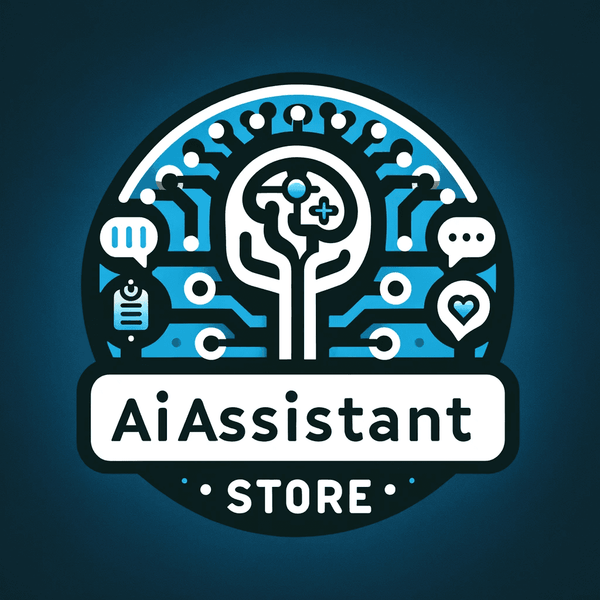Ever notice how some AI tools feel sharp and dependable, while others spit out junk answers? Nine times out of ten, the hidden culprit isn’t the fancy algorithm - it’s the boring stuff nobody brags about: data management.
Algorithms get the spotlight, sure, but without clean, structured, and easy-to-reach data, those models are basically chefs stuck with spoiled groceries. Messy. Painful. Honestly? Preventable.
This guide breaks down what makes AI data management actually good, which tools can help, and a few overlooked practices that even pros slip on. Whether you’re wrangling medical records, tracking e-commerce flows, or just geeking out about ML pipelines, there’s something in here for you.
Articles you may like to read after this one:
🔗 Top AI cloud business management platform tools
Best AI cloud tools to streamline business operations effectively.
🔗 Best AI for ERP smart chaos management
AI-driven ERP solutions that reduce inefficiencies and improve workflow.
🔗 Top 10 AI project management tools
AI tools that optimize project planning, collaboration, and execution.
🔗 Data science and AI: The future of innovation
How data science and AI are transforming industries and driving progress.
What Makes Data Management for AI Actually Good? 🌟
At its heart, strong data management comes down to making sure info is:
-
Accurate - Garbage in, garbage out. Wrong training data → wrong AI.
-
Accessible - If you need three VPNs and a prayer to reach it, it’s not helping.
-
Consistent - Schemas, formats, and labels should make sense across systems.
-
Secure - Finance and health data especially need real governance + privacy guardrails.
-
Scalable - Today’s 10 GB dataset can easily turn into tomorrow’s 10 TB.
And let’s be real: no fancy model trick can fix sloppy data hygiene.
Quick Comparison Table of Top Data Management Tools for AI 🛠️
| Tool | Best For | Price | Why It Works (quirks included) |
|---|---|---|---|
| Databricks | Data scientists + teams | $$$ (enterprise) | Unified lakehouse, strong ML tie-ins… can feel overwhelming. |
| Snowflake | Analytics-heavy orgs | $$ | Cloud-first, SQL-friendly, scales smoothly. |
| Google BigQuery | Startups + explorers | $ (pay-per-use) | Fast to spin up, fast queries… but watch out for billing quirks. |
| AWS S3 + Glue | Flexible pipelines | Varies | Raw storage + ETL power - setup’s fiddly, though. |
| Dataiku | Mixed teams (biz + tech) | $$$ | Drag-and-drop workflows, surprisingly fun UI. |
(Prices = directional only; vendors keep shifting specifics.)
Why Data Quality Beats Model Tuning Every Time ⚡
Here’s the blunt truth: surveys keep showing that data pros spend most of their time cleaning and prepping data - around 38% in one big report [1]. It’s not wasted - it’s the backbone.
Picture this: you give your model inconsistent hospital records. No amount of fine-tuning rescues it. It’s like trying to train a chess player with checkers rules. They’ll “learn,” but it’ll be the wrong game.
Quick test: if production issues trace back to mystery columns, ID mismatches, or shifting schemas… that’s not a modeling failure. It’s a data management fail.
Data Pipelines: The Lifeblood of AI 🩸
Pipelines are what move raw data into model-ready fuel. They cover:
-
Ingestion: APIs, databases, sensors, whatever.
-
Transformation: Cleaning, reshaping, enriching.
-
Storage: Lakes, warehouses, or hybrids (yep, “lakehouse” is real).
-
Serving: Delivering data in real time or batch for AI use.
If that flow stutters, your AI coughs. A smooth pipeline = oil in an engine - mostly invisible but critical. Pro tip: version not just your models, but also data + transformations. Two months later when a dashboard metric looks weird, you’ll be glad you can reproduce the exact run.
Governance and Ethics in AI Data ⚖️
AI doesn’t just crunch numbers - it reflects what’s hidden inside the numbers. Without guardrails, you risk embedding bias or making unethical calls.
-
Bias Audits: Spot skews, document fixes.
-
Explainability + Lineage: Track origins + processing, ideally in code not wiki notes.
-
Privacy & Compliance: Map against frameworks/laws. The NIST AI RMF lays out a governance structure [2]. For regulated data, align with GDPR (EU) and - if in U.S. healthcare - HIPAA rules [3][4].
Bottom line: one ethical slip can sink the whole project. Nobody wants a “smart” system that quietly discriminates.
Cloud vs On-Prem for AI Data 🏢☁️
This fight never dies.
-
Cloud → elastic, great for teamwork… but watch costs spiral without FinOps discipline.
-
On-prem → more control, sometimes cheaper at scale… but slower to evolve.
-
Hybrid → often the compromise: keep sensitive data in-house, burst the rest to cloud. Clunky, but it works.
Pro note: the teams that nail this always tag resources early, set cost alerts, and treat infra-as-code as a rule, not an option.
Emerging Trends in Data Management for AI 🔮
-
Data Mesh - domains own their data as a “product.”
-
Synthetic Data - fills gaps or balances classes; great for rare events, but validate before shipping.
-
Vector Databases - optimized for embeddings + semantic search; FAISS is the backbone for many [5].
-
Automated Labeling - weak supervision/data programming can save huge manual hours (though validation still matters).
These aren’t buzzwords anymore - they’re already shaping next-gen architectures.
Real-World Case: Retail AI Without Clean Data 🛒
I once watched a retail AI project fall apart because product IDs didn’t match across regions. Imagine recommending shoes when “Product123” meant sandals in one file and snow boots in another. Customers saw suggestions like: “You bought sunscreen - try wool socks!”
We fixed it with a global product dictionary, enforced schema contracts, and a fail-fast validation gate in the pipeline. Accuracy jumped instantly - no model tweaks required.
Lesson: tiny inconsistencies → big embarrassments. Contracts + lineage could’ve saved months.
Implementation Gotchas (That Bite Even Experienced Teams) 🧩
-
Silent schema drift → contracts + checks at ingest/serve edges.
-
One giant table → curate feature views with owners, refresh schedules, tests.
-
Docs later → bad idea; bake lineage + metrics into pipelines upfront.
-
No feedback loop → log inputs/outputs, feed outcomes back for monitoring.
-
PII spread → classify data, enforce least-privilege, audit often (helps with GDPR/HIPAA, too) [3][4].
Data Is the Real AI Superpower 💡
Here’s the kicker: the smartest models in the world crumble without solid data. If you want AI that thrives in production, double down on pipelines, governance, and storage.
Think of data as soil, and AI as the plant. Sunlight and water help, but if the soil’s poisoned - good luck growing anything. 🌱
References
-
Anaconda — 2022 State of Data Science Report (PDF). Time spent on data prep/cleaning. Link
-
NIST — AI Risk Management Framework (AI RMF 1.0) (PDF). Governance & trust guidance. Link
-
EU — GDPR Official Journal. Privacy + lawful bases. Link
-
HHS — Summary of the HIPAA Privacy Rule. U.S. health privacy requirements. Link
-
Johnson, Douze, Jégou — “Billion-Scale Similarity Search with GPUs” (FAISS). Vector search backbone. Link

